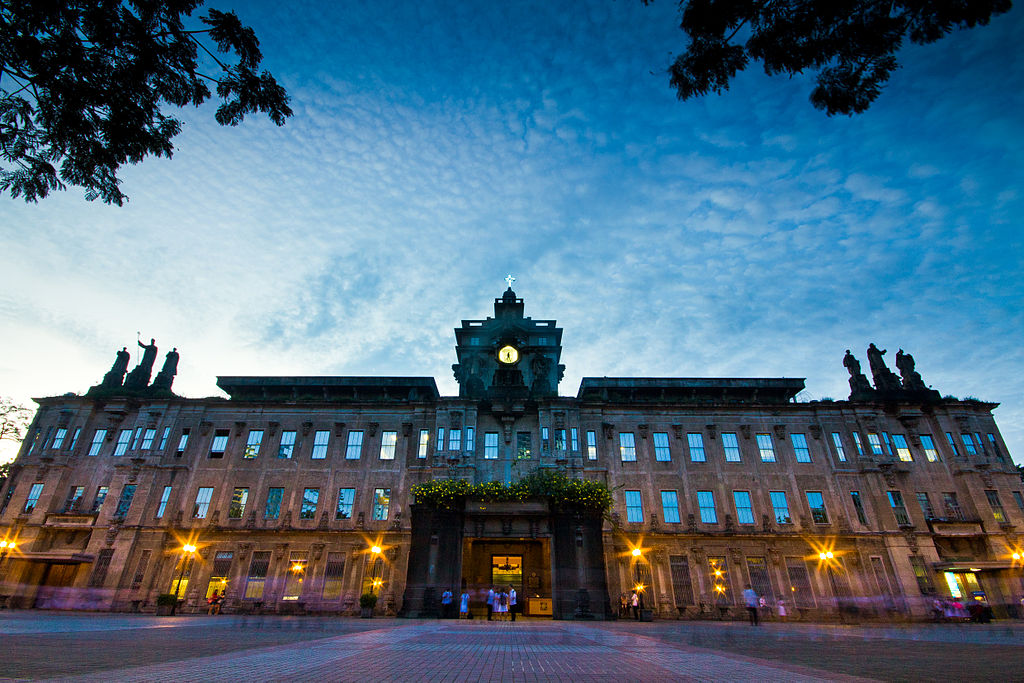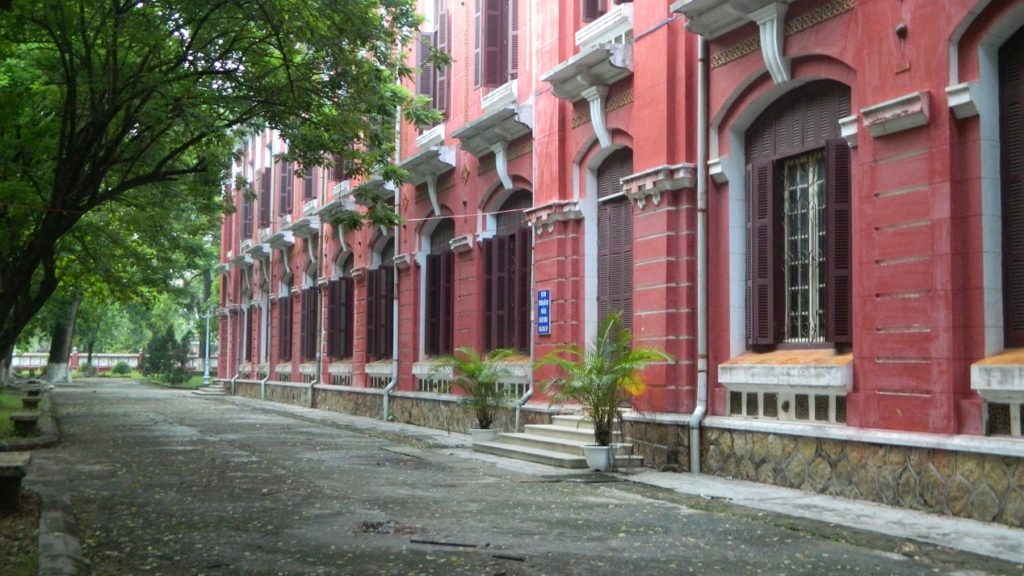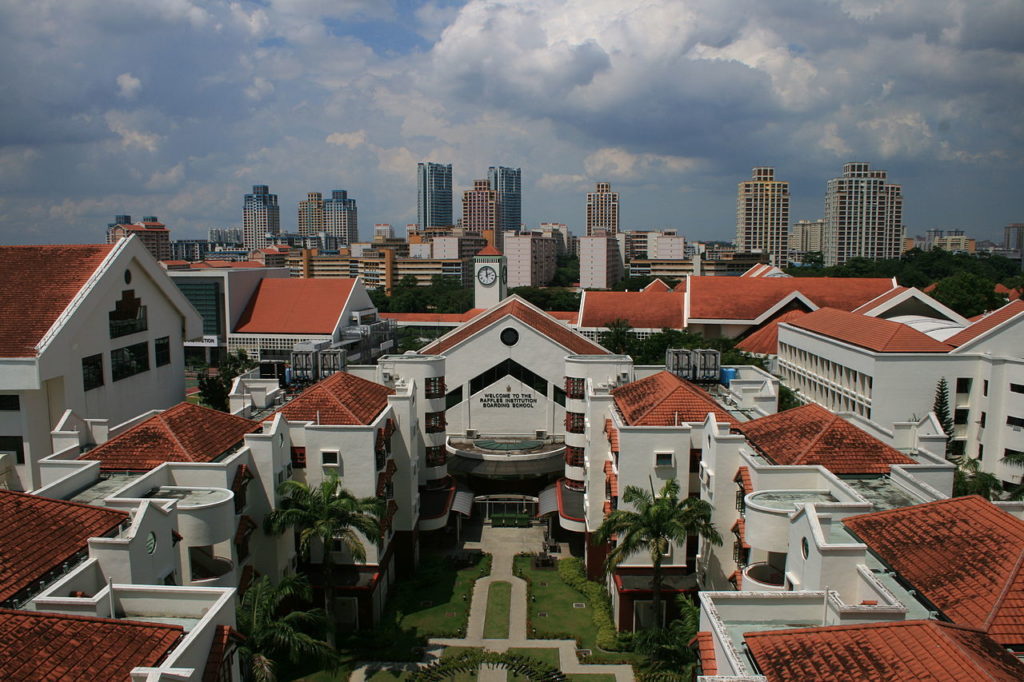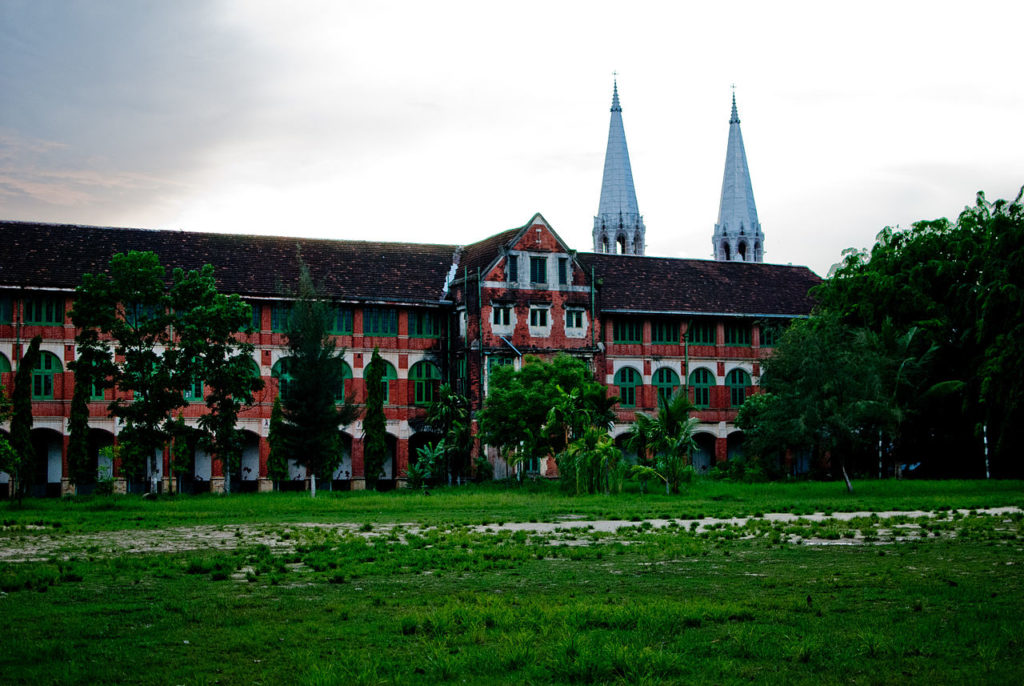1. University of Santo Tomas, Philippines
Founded in 1611 by a Spanish friar named Miguel de Benavides, the university, often credited as the oldest school in Asia, lay within the walled city of Intramuros in Manila for over 300 years.
In the early 1920s, a new structure was erected on a sprawling 22-hectare site 5 kilometres away in Sampaloc to accommodate the growing number of students.
 Designed by Father Roque Ruano – a priest and civil engineer – the new building, an imposing four-storey Renaissance Revival beauty, was also the first earthquake-proof structure in the Philippines.
Designed by Father Roque Ruano – a priest and civil engineer – the new building, an imposing four-storey Renaissance Revival beauty, was also the first earthquake-proof structure in the Philippines.
The main building, 74 metres in width and 86 metres in length, comprises 40 small blocks with two large courtyards. Crowning its fourth floor is an array of stone sculptures of prominent personalities through the ages, such as Plato, Aristotle, St Augustine of Hippo and Shakespeare.
Over the decades, this Catholic campus has grown to include more than 20 buildings surrounding the main building that house various faculties, secondary school departments and facilities.
In 2012, the National Historical Commission of the Philippines designated University of Santo Tomas as a National Historical Landmark.
2. Penang Free School, Malaysia
Penang Free School first opened its doors in 1816, making it the oldest English-medium school in Southeast Asia.
The idea of a free school – a school for all children regardless of social class, race or religion – was mooted by Reverend Robert Sparke Hutchings, the then colonial chaplain of the Prince of Wales Island (modern-day Penang).
 The school initially occupied a rented space on Love Lane, before moving to a grand Neo-Palladian building on Farquhar Road in 1821, now home to the Penang State Museum and Art Gallery.
The school initially occupied a rented space on Love Lane, before moving to a grand Neo-Palladian building on Farquhar Road in 1821, now home to the Penang State Museum and Art Gallery.
With increasing enrollments, Penang Free School was relocated to a new 12-hectare plot along Green Lane in 1928, where it still stands.
Penang Free School’s esteemed alumni, known as Old Frees, include the inventor of the face mask Dr Wu Lien-teh, movie legend P Ramlee, as well as Malaysia’s Father of Independence and first prime minister, Tunku Abdul Rahman.
3. Lycee Preah Sisowath, Cambodia
Founded in 1873, Lycee Preah Sisowath or Preah Sisowath High School in Phnom Penh was one of the first French-medium schools in the kingdom.
Prior to the establishment of the French protectorate of Cambodia in 1863, traditional education was carried out by Buddhist monks and consisted of reading and writing sacred texts in the Khmer language.
Established by the French to produce bilingual intermediaries to aid French-Cambodian interactions, the school’s name was changed from the College of the Protectorate to Lycee Preah Sisowath in 1933, after the Cambodian monarch King Sisowath.
During Cambodia’s brutal Khmer Rouge period, the school, then known as Phnom Daun Penh High School, was turned into an army warehouse before it reopened in 1979.
In the 1990s, the Cambodian government renamed the school as Lycee Preah Sisowath as a mark of the school’s long heritage.
4. Quoc Hoc Hue, Vietnam
Quoc Hoc Hue or National High School in Vietnam’s former imperial capital of Hue is one of the country’s most prestigious secondary schools, and one of its oldest.
First established by the ruling French colonials in 1896, this school, recognised as a National Cultural Historical Monument in 1990, was built on the site of a former French naval base.
 For two decades, the school catered to Vietnamese royalty, but in 1916, it opened its doors to include students from French Indochina’s elite society.
For two decades, the school catered to Vietnamese royalty, but in 1916, it opened its doors to include students from French Indochina’s elite society.
Its sprawling campus, lined with shady trees, benches and verdant gardens, is anchored by five blocks of modern, red brick structures featuring French and Vietnamese architectural styles.
Known as Ecole Primaire Superieure until 1956, Quoc Hoc Hue is also the alma mater of some of the country’s most decorated leaders, including Ho Chi Minh, the founding father of modern Vietnam.
5. Raffles Institution, Singapore
When Stamford Raffles first established a British trading post in Singapore in 1819, he proposed the idea of an educational institution that would cater to both the officers of the British East India Company and local elites.
While the foundation stone was laid on Bras Basah Road in April 1823, the building was only completed over a decade later in 1837 after many hurdles, including a shortage of funds.
 First known as the Singapore Institution of Free School, it was renamed Raffles Institution in the late 1860s. In its long history, the campus has been relocated twice, first to Grange Road in 1972 then to its current site in Bishan in 1990.
First known as the Singapore Institution of Free School, it was renamed Raffles Institution in the late 1860s. In its long history, the campus has been relocated twice, first to Grange Road in 1972 then to its current site in Bishan in 1990.
Despite early obstacles, Raffles Institution has grown into one of Singapore’s top schools, producing illustrious alumni such as Singapore’s first prime minister Lee Kuan Yew and its first president Yusof Ishak.
6. Basic Education High School No 6 Botataung, Myanmar
Basic Education High School No 6 Botataung, known as St Paul’s English School prior to 1965, is one of Myanmar’s oldest schools.
Built in 1855, this all-boys school was the brainchild of French missionary Paul Ambroise Bigandet, and catered to the upper echelons of British Burma society, primarily wealthy Burmese, Anglo-Burmese and Anglo-Indians.
 In the 1900s, this beautiful colonial era red brick building was expanded to include two wings designed by architect Thomas Swales, known for his work on many of Myanmar’s eminent colonial structures such as the Sofaer Building and the Fytche Square Building.
In the 1900s, this beautiful colonial era red brick building was expanded to include two wings designed by architect Thomas Swales, known for his work on many of Myanmar’s eminent colonial structures such as the Sofaer Building and the Fytche Square Building.
Still considered one of the best learning institutions in the country, the school was designated a heritage building under the Yangon City Heritage List in the 2000s.
According to airasia.com













